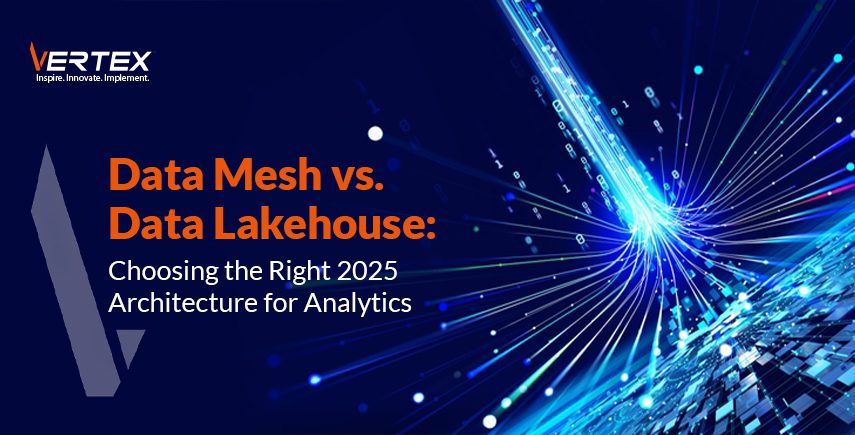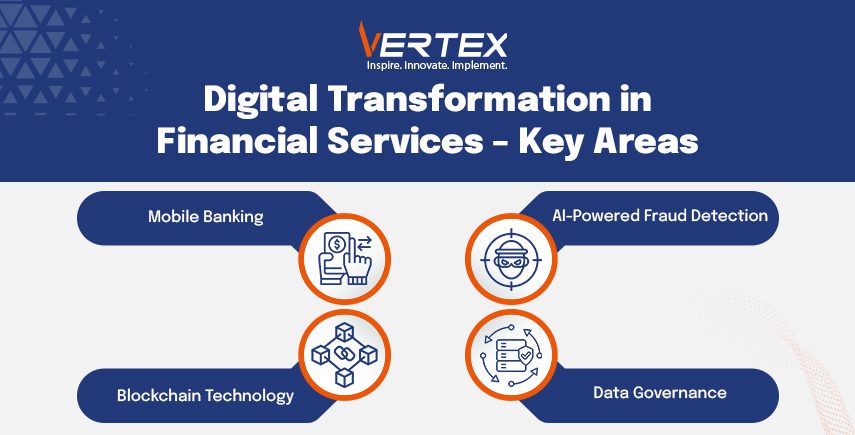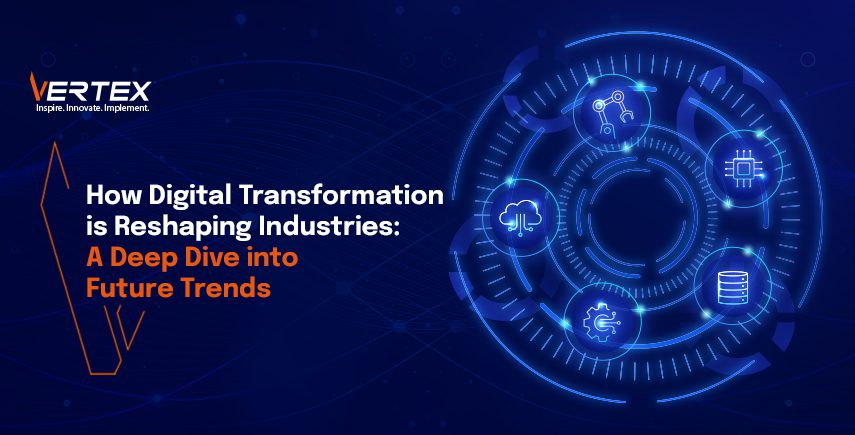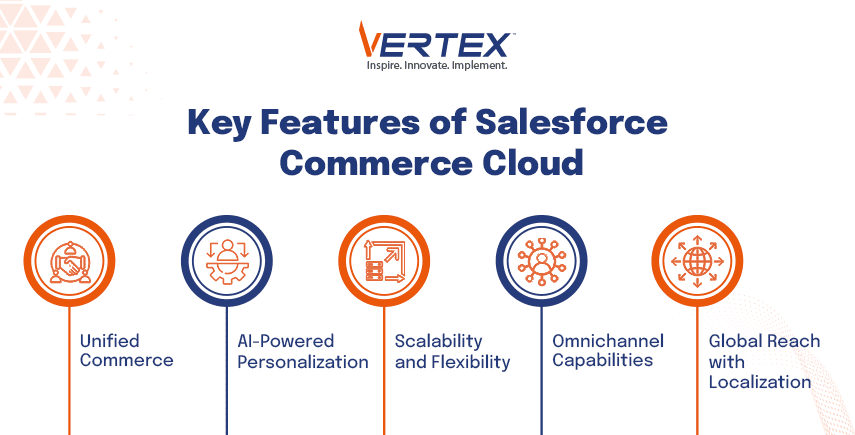Data analytics have been the backbone of businesses for a long time. Patterns, expenditure rates, and pricing are all done based on analytics. Organizations spend millions to get the best of data analytics so that they can scale on the profit margin. This is all because they understand the true potential of data analytics. The two prominent architectural software are Data Lakehouse and Data Mesh. Each of these software offers its unique benefits and challenges.
In this article, we will dive deep into the architecture of these softwares along with their benefits and challenges that one can face while implementing them.
Understanding Data Lakehouse
Data Lakehouse runs a hybrid architecture combining data lakes and warehouse elements. Through this, organizations can store any type of data, be it structured, nonstructured, or semi-structured data, in a single repository while providing features like ACID (Atomicity, Consistency, Isolation, Durability), which is mainly found in data warehouses. This architecture is designed to reduce cost and complexity by combining the best of both worlds.
A report published by Dremio found that more than 65% of the survey attendees have already adopted Data Lakehouse for their analytics.
Key Features of Data Lakehouse
- Centralized Architecture: Data Lakehouse has a centralized approach when it comes to managing data, streamlining access, and governance.
- Scalability: The data is stored and processed separately in this particular setting. So, when more space is needed for data storage, it can be increased without struggling with the processing of said data.
- Cost Efficiency: Data Lakehouse is cheap when it comes to operational costs, they use cheaper storage like AWS S3 or Azure Data Lake Storage so that organizations can manage large volumes of data cost-effectively. Dremio also covered in their 2025 report that the primary reason for which organizations (Cited by 19% of respondents)choose Data Lakehouse is cost efficiency.
- Unified Data Management: This means that all the data is kept on a single reliable source, giving much more accurate results. Ensuring easier data management with fewer errors.
Understanding Data Mesh
Data Mesh can be considered the polar opposite of Data Lakehouse, as no centralized architecture exists. Furthermore, you get individual domains or business units that can be accessed and governed independently. This approach promotes domain-specific ownership and self-service, ensuring teams operate separately, still adhering to global standards.
The entire Data Mesh market was valued at $1.2 Billion in 2023, which is expected to grow to $2.5 Billion by 2028 with a CAGR growth of 16.4%, as covered in a study done by marketsandmarkets.
Key Features of Data Mesh
- Decentralized Architecture: As we know, there is no centralized architecture in Data Mesh. Each domain is responsible for its own functionality without any interception of any other domain. This also reduces the load off the central team.
- Domain Ownership: Each domain team is responsible for their own domain’s quality and output.
- Flexibility and Scalability: Data Mesh adds flexibility when it comes to domains. Any or each domain can scale its architectures without putting any load on any other domain.
- Federated Governance: Though each domain is responsible for its operation and output, it must adhere to governance architecture. This is done to ensure interoperability.
Key Differences Between Data Lakehouse and Data Mesh

Architectural Approach |
||
| Feature | Data Lakehouse | Data Mesh |
| Architecture Type | Centralized | Decentralized |
| Ownership | Centralized IT team | Domain-specific ownership |
| Governance | Uniform governance across the organization | Governance with local autonomy |
Scalability
Both architectures can handle large volumes of data effectively. However, the approach they take to execute that is where the difference lies.
- Data Lakehouse works best with domains like data science and machine learning because you can independently scale on both storage and computer resources according to your needs.
- Data Mesh, on the other hand, promotes scalability through domain-specific resource management. Each domain can adjust its infrastructure based on its unique requirements.
Administrative Efforts
The administrative burden carries a significant difference between the two architectures:
- In a Data Lakehouse, there is a centralized team that manages the entire system, which results in better execution of administrative tasks. However, there can be a bit of a backlog as the demand grows.
- With a Data Mesh, each domain team is responsible for its own data management. At the same time, they do have a centralized governance body, which is why it often leads to better-quality data due to localized ownership.

Advantages of Data Lakehouse
- Simplified Management: With a centralized approach to data storage and processing, organizations can streamline workflows and reduce overhead time.
- Enhanced Data Governance: The unified approach also helps implement new policies across all the data sets as we progress.
- Cost-Effective Storage Solutions: The use of large cloud-based storage options not only helps accommodate large datasets but also lowers costs.
Advantages of Data Mesh
- Increased Agility: The domain-centric approach is quick. Domain teams can respond quickly to changing business needs without waiting for central approvals or resources.
- Improved Data Quality: Since each domain is locally owned, this accounts for richer data quality in each domain.
- Tailored Solutions: Each domain can implement solutions that best fit its specific use cases without being constrained by a one-size-fits-all approach.
Considerations for Choosing Between Architectures
Organizations are usually confused between Data Lakehouse and Data Mesh; they can use the pointers below to decide.
- Size and Structure of the Organization:
- If you have a large organization, then a decentralized approach would be a better fit for you. Data Mesh is the clear choice in this.
- Smaller organizations might find the centralized model of Data Lakehouse more manageable.
- Nature of Data Workloads:
- A Data Lakehouse may be more suitable if an organization deals with structured data requiring heavy processing. An independent processing structure of data can be beneficial.
- A data mesh could provide the necessary flexibility for organizations that need real-time analytics across multiple domains.
- Future Growth Plans:
- If the organization is planning to upscale in the near future, then Data Mesh is the clear choice for them.
- Conversely, those focused on optimizing existing processes might lean toward implementing a Data Lakehouse.
- Cultural Readiness:
- For Data Mesh to work well, the organization must have a culture that fosters teams to manage their own data and take responsibility for keeping it accurate and useful.
- A more traditional culture may align better with the centralized governance model of a Data Lakehouse.
Conclusion
This article taught us about two very different data structures and their architectures. Be it the centralized architecture of Data Lakehouse or a decentralized architecture of data mesh, both have a specific use case. Both architectures offer unique advantages tailored to different organizational needs and structures. Businesses can assess the points covered in the above article, and then, according to their strategic goal, they can make their own decision.
Are you ready to transform your data strategy for 2025? Whether you’re leaning toward a Data Lakehouse or exploring the decentralized approach of Data Mesh, we at Vertex CS will help you navigate the complexities of modern data architecture and empower your organization to thrive in the data-driven future.































